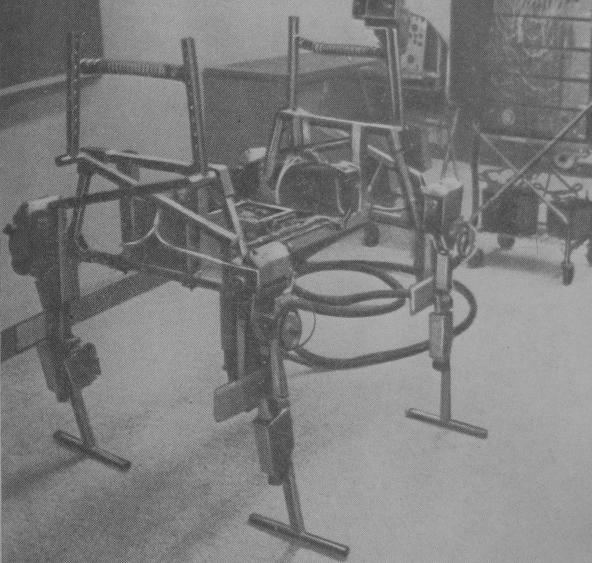In 1965 at the University of Southern California R. McGhee and A. Frank constructed four-legged walking machine, known as «The Californian Horse» or «Phony Pony». This device was equipped by electrical motors, it had two degrees of freedom in each leg (thigh and knee) and one adaptive degree of freedom in the frontal plane.[1]
The 50-kilogram construction was based on the T-shaped structures. The position of each joint was determined by means of sensors.[2] Two types of gait were implemented with using of the theory of the finite states:
1). Trot is a relatively stable type of gait, as during locomotion speed has a stabilizing dynamic impact. The sufficiently fast phase of limbs’ transfer minimizes the duration of an unstable state.
2). Crawling, in which three limbs are on bearing at any given time. This is over-state (as at this configuration, foots of two legs are sufficient for stable bearing), so one leg slips almost always.
Attempts to implement other types of gaits were not undertaken.[1]
References:
1. Вукобратович М. Шагающие роботы и антропоморфные механизмы / М. Вукобратович. — Москва: Мир, 1976. – 544с.
2. Gonzalez-de-Santos P. Quadrupedal Locomotion : An Introduction to the Control of Four-legged Robots / Pablo Gonzalez-de-Santos, Elena Garcia, Joaquin Estremera. – London : Springer-Verlag, 2006. – 267p.
